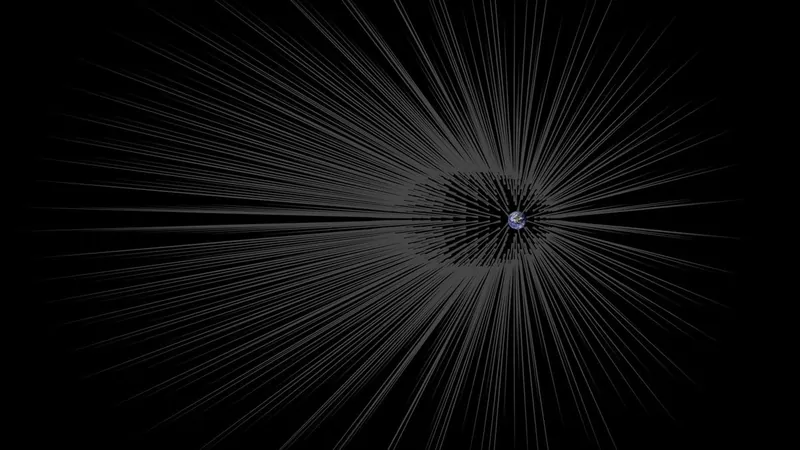
Is an Invisible 'Fuzzy' Phenomenon Hiding at the Heart of the Milky Way?
2025-01-14
Author: John Tan
Is an Invisible 'Fuzzy' Phenomenon Hiding at the Heart of the Milky Way?
Recent research is stirring excitement in the astronomical community as it suggests that massive 'dark stars,' composed of elusive clusters of matter, may lie at the core of galaxies—possibly even our own Milky Way.
Despite overwhelming evidence that most of a galaxy's mass is shrouded in mystery, the true nature of 'dark matter' remains largely unknown. For decades, scientists have leaned towards the notion that dark matter comprises heavy particles that seldom interact with visible matter or light. However, this theory falls short in explaining the surprisingly low density observed in the centers of galaxies. Simulations predict an abundance of mass clumping in these regions, yet observations consistently tell a different story.
Enter the intriguing concept of 'fuzzy' dark matter. Hypothetical particles that are billions of times lighter than neutrinos may be the key. These light particles exhibit quantum-wave behavior on vast cosmic scales, allowing them to coalesce into massive yet diffuse clumps—potential dark stars. These immense formations could extend thousands of light-years while holding low mass, effectively becoming the gravitational anchors for galaxies without generating excessive densities at their cores.
However, the universe is more than just dark matter. Ordinary matter also plays a pivotal role in shaping galaxies, manifesting as clouds of gas and stars that astronomers can observe. To unravel the relationship between this normal matter and fuzzy dark matter, researchers have undertaken new studies.
In a groundbreaking paper released on December 17, 2024, an international team of astrophysicists presented a simplified model designed to simulate how galaxies could evolve under the influence of fuzzy dark matter. Starting with a model featuring a significant proportion of fuzzy dark matter combined with an ideal gas, they computed the gravitational dynamics between the two components. The results were intriguing: the initially chaotic configurations of dark matter rapidly coalesced into a dense nucleus, generating an expansive cloud of surrounding matter.
The result? A unique structure dubbed a 'fermion-boson star,' a massive entity that could stretch up to 10,000 light-years across, remaining largely invisible aside from a faint shimmer produced by the dispersed gas. Notably, this model aligns with expectations of a galactic core, showcasing moderate densities of normal matter that corroborate pivotal predictions within the fuzzy dark matter framework.
As researchers look ahead, more sophisticated modeling is planned to further investigate these enigmatic stars and how they could be observed in reality. The implications of this research might not only reshape our understanding of the Milky Way's structure but also unlock new avenues in the quest to decipher the mysteries surrounding dark matter. What wonders of the universe may yet await discovery? Stay tuned!

 Brasil (PT)
Brasil (PT)
 Canada (EN)
Canada (EN)
 Chile (ES)
Chile (ES)
 Česko (CS)
Česko (CS)
 대한민국 (KO)
대한민국 (KO)
 España (ES)
España (ES)
 France (FR)
France (FR)
 Hong Kong (EN)
Hong Kong (EN)
 Italia (IT)
Italia (IT)
 日本 (JA)
日本 (JA)
 Magyarország (HU)
Magyarország (HU)
 Norge (NO)
Norge (NO)
 Polska (PL)
Polska (PL)
 Schweiz (DE)
Schweiz (DE)
 Singapore (EN)
Singapore (EN)
 Sverige (SV)
Sverige (SV)
 Suomi (FI)
Suomi (FI)
 Türkiye (TR)
Türkiye (TR)
 الإمارات العربية المتحدة (AR)
الإمارات العربية المتحدة (AR)